
Myanmar Gold Miners Extract Wealth, Face Hardships
This photo essay is the third installment in NRGI's 2015 extractive industries photo documentary project, which aims to capture the complex political, environmental and social realities at resource extraction sites throughout Myanmar.
The atmosphere is stifling and damp, the air opaque from fine rock dust. Half a dozen miners are silhouetted against the glow of tungsten bulbs strung along the length of the mine shaft. The miners' headlamps emit streams of cold, blue light, illuminating faces, hands, piping and the metal surface of a pneumatic drill.
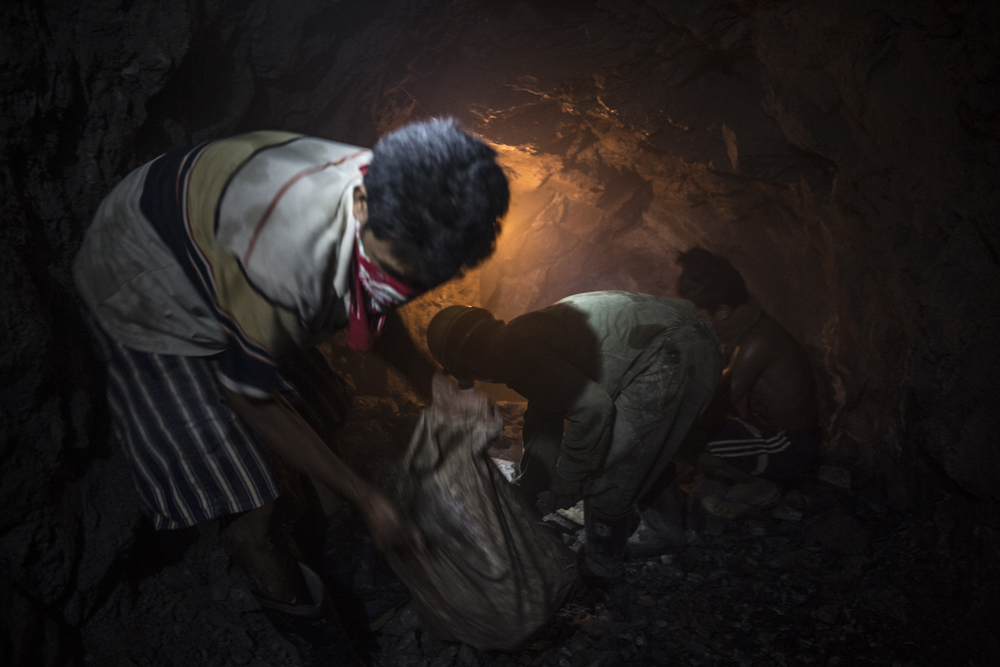
Miners dislodge chunks of rock inside a locally owned gold mine near Madaya, a town east of Mandalay in Myanmar. Photo: Andre Malerba for NRGI
Talking in Burmese, the miners' voices ricochet in the cramped space. They struggle to bind pieces of the drill together with rope and maneuver it into place at the end of the mine shaft. A few seconds of silence are broken by the deafening sound of the drill as it begins to dislodge chunks of rock. More dust fills the air. Some miners have helmets and all are outfitted in the cheap football shorts, T-shirts and flip-flops typical of laborers in Myanmar. No one wears a mask.
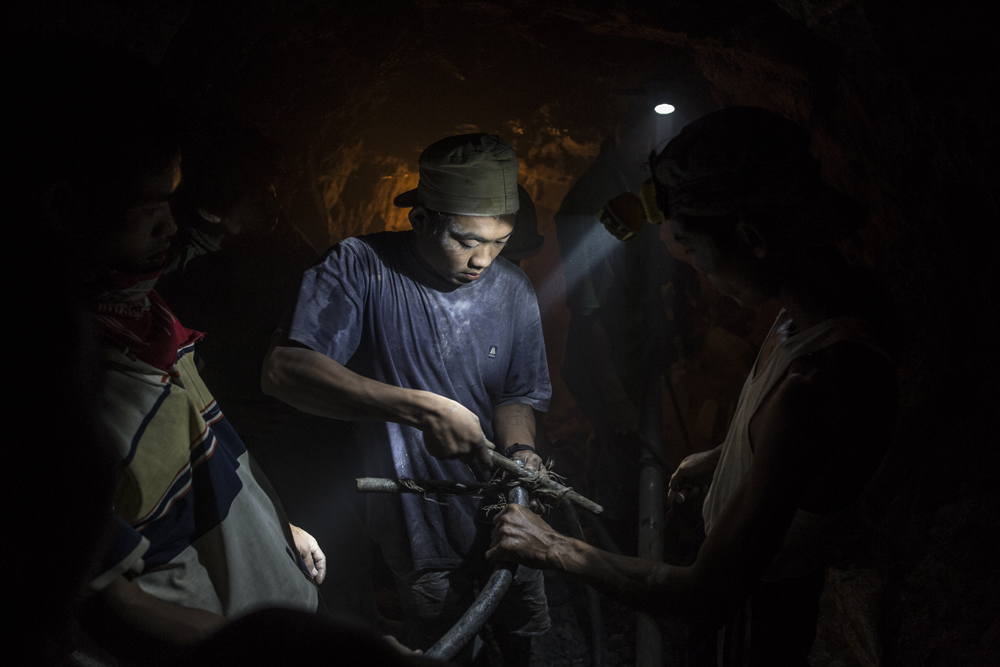
Miners operate a pneumatic drill, which is used in conjunction with dynamite to dislodge chunks of rock inside the gold mine. Some drillers exposed to the dust say they have contracted "gun disease," a lung infection that bears some similarities to silicosis, a disease caused by breathing in silica dust. Photo: Andre Malerba for NRGI
Here, east of Mandalay city, on the edge of Myanmar's dry, central zone, gold mining has been a staple of life for decades. After sluicing and panning by hand revealed the presence of gold, traditional mining methods gave way to dynamite, drills and chemicals like cyanide and mercury, used in industrial-scale sites. Most of the mines are informal businesses owned by locals, and are underground.
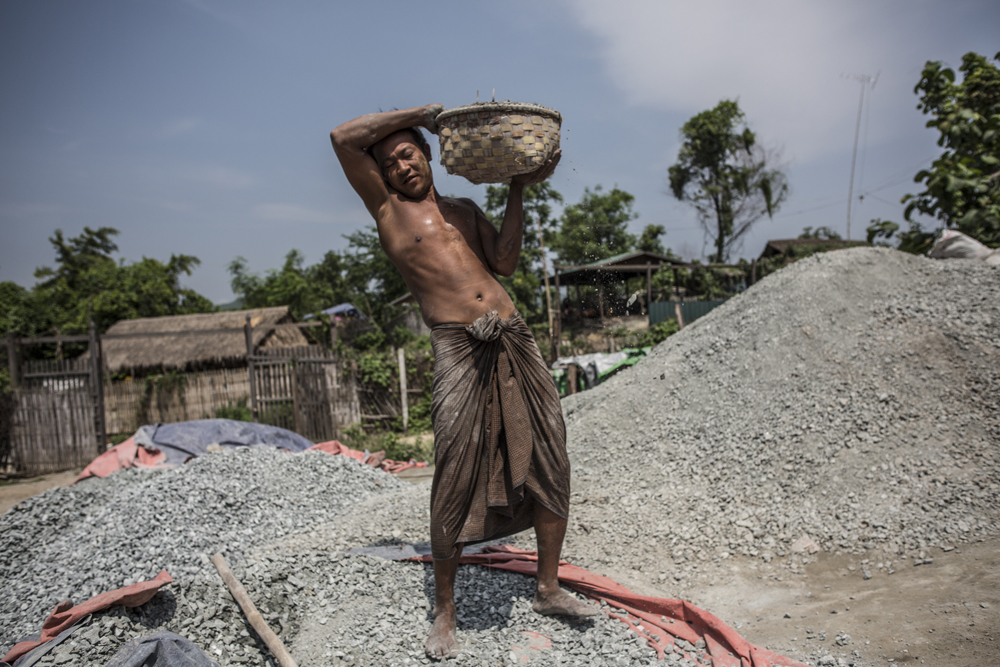
A man carries baskets of gravel that will be crushed into dust from which gold will be separated, near Madaya, a town east of Mandalay in Myanmar. Photo: Andre Malerba for NRGI
However, a massive open-pit mine, owned by Chinese and Myanmar business interests, has also been carved into the landscape. Originally covering 20 acres at its inception in 2010, it has expanded to an unknown size, impacting surrounding villages including Yay Myit; residents claim they were never consulted or told about the expansion. The village now sits on top of approximately six feet of sand, reportedly due to monsoon rains washing sand and gravel down the mountainside. Inhabitants of Yay Myit say that this process has also rendered large portions of the surrounding farmland infertile.
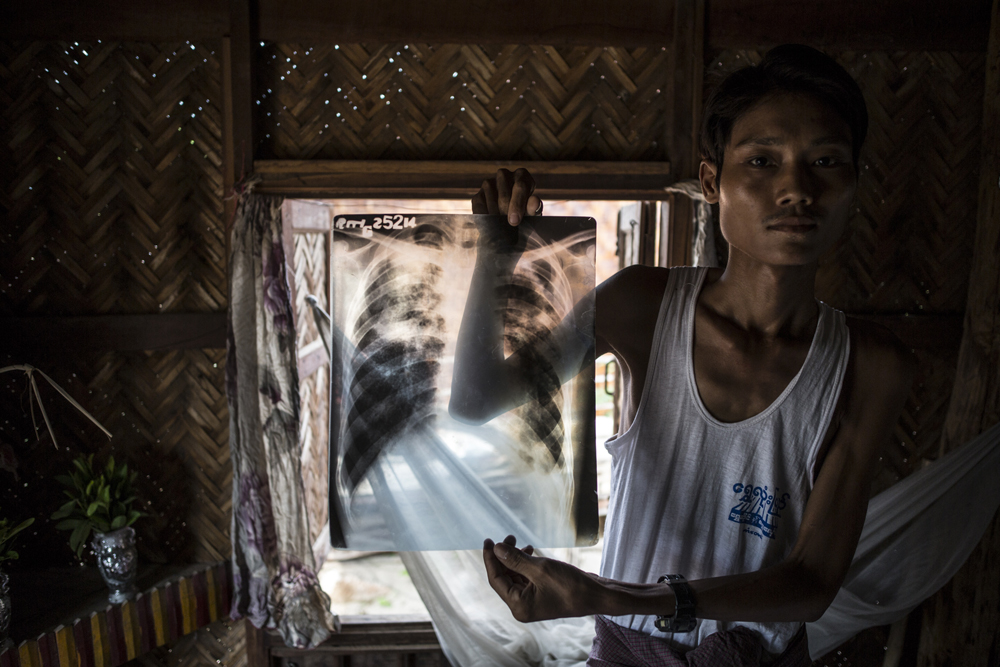
Ko Maw Gyi, a miner in Chaungyi who claims he is infected with "gun disease" holds up his X-ray to show his lung infection. He has taken two courses of tuberculosis medication, neither of which were successful. He says he was afraid to seek further help because it would mean telling the doctor his treatment failed. Photo: Andre Malerba for NRGI
Modern extraction techniques have given rise to environmental and health issues that have yet to be fully and officially quantified or recorded.
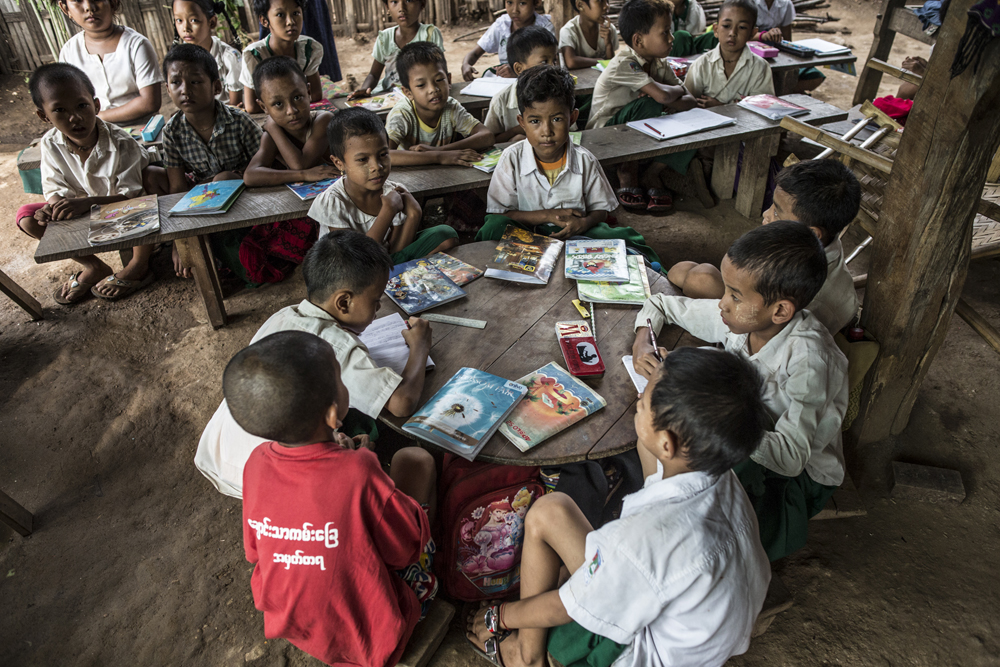
Children sit during a lesson at a free school funded by mining activity in Chaungyi, Myanmar. Photo: Andre Malerba for NRGI
More than 100 deaths in recent years have been attributed to "gun disease," so called by the miners because they believe it is caused by breathing in the dust created by the use of pneumatic drills (colloquially known as “guns” in Burmese). Those with “gun disease” exhibit symptoms like emaciation, coughing, and difficulty breathing, which are also associated with tuberculosis (TB). A local doctor who performed autopsies on the bodies of miners who had perished from “gun disease” claimed he found traces of different metals in the miners' lungs and suggested this might be the cause of death. Miners' symptoms also seem to be consistent with silicosis, a common infection of the lungs among miners and stone workers that is caused by breathing in silica dust. A silicosis infection also makes a person very susceptible to TB. Though miners have stopped working at sites associated with “gun disease,” communities remain exposed to this and other health issues in the absence of proper diagnosis and medical attention.
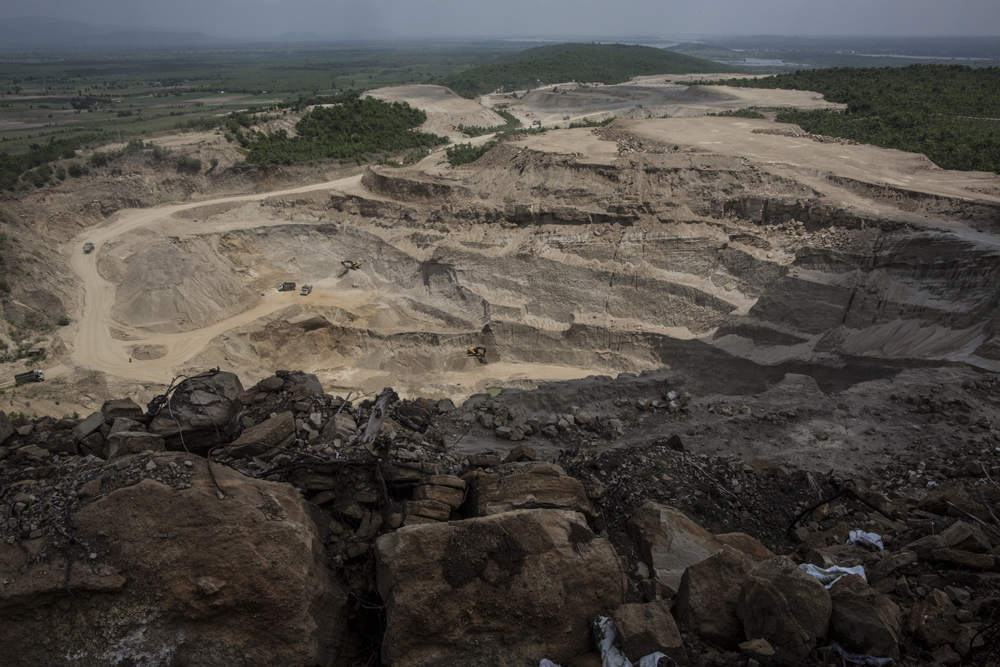
A large, open-pit gold mine east of Mandalay is owned by Chinese and Myanmar business interests, and has expanded considerably since 2010 from its original 20 acres. Photo: Andre Malerba for NRGI
Medical challenges are compounded by a lack of local knowledge about health risks and treatment options, as well as a general fear of doctors, who are accorded high social status. Ko Maw Gyi, from Chaungyi village, for example, was unable to fully recover from TB despite taking two full courses of medication. Though his fever and night sweats have vanished, he says he cannot gain weight and still experiences difficulty breathing. However, a fear of reporting these lingering symptoms to his doctor kept him from returning to the hospital for additional treatment.
Workers also routinely handle mercury and cyanide without protective gear. Though the chemicals are reportedly banned in Myanmar mining contracts, they are used in locally owned mines and local law enforcement refrains from interfering; in fact, some local mine owners openly admit to using the chemicals, apparently unafraid of the consequences. In the case of the open-pit mine, truckloads of rock are allegedly driven to an off-site facility where large quantities of cyanide are used in mineral extraction. Lack of environmental monitoring and law enforcement oversight creates risks that waste from this process will contaminate water and soil in the area. While long-term effects of chemical use in mining have not been scientifically documented here, locals say they have seen masses of dead fish in nearby waterways.
On the other hand, locally owned gold mines have delivered some benefits to surrounding communities. Schools are plentiful, free and operate at high capacity, supported by revenue generated by the mines. The villages are also relatively clean and well-constructed.
Those who work in the mines earn around USD 10 per day – three to five times more than the average Myanmar laborer earns working in a brick factory or gravel pit and up to 10 times more than farm laborers. People who cannot find another source of employment sometimes attempt to sneak into the open-pit mine, and sluice for gold alongside the heavy machinery. Though they may earn USD 5 on a good day, falling rocks and landslides can cause injuries or death and police often force villagers to leave at the behest of the owners.
Since becoming an Extractive Industries Transparency Initiative (EITI) candidate country in July 2014, Myanmar's government has taken steps toward greater accountability in its mining activities. The impacts of this process have yet to trickle down to mining communities like Yay Myit, though EITI representatives reportedly visited the village and other gold mining towns in the area. In the coming years, perhaps EITI and other reforms will shed greater light on the impacts of Myanmar's gold industry, and help to provide a sustainable mining model for the environment, local interests, and big business alike.
Andre Malerba is an American photojournalist living in Yangon, Myanmar.
The views the author expresses here are his own and do not represent NRGI. NRGI does not guarantee the accuracy, completeness and validity of any statements made within this article. NRGI accepts no liability for any errors, omissions or representations.
